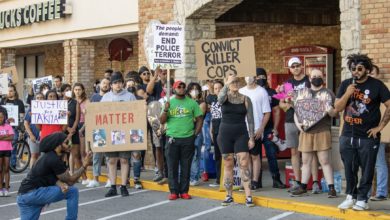A page has turned in the legal battle in the case of Jordan Miles, a case of racist police aggression that has sparked a long and intense struggle in the surrounding community.
On Jan. 12, 2010, three undercover police officers attacked high school student Miles while he was walking to his grandmother’s house in Homewood, in Homewood, a predominantly Black working-class neighborhood. The three officers, Richard Ewing, David Sisak and Michael Saldutte, did not identify themselves as police officers. Instead they shouted, “Where’s the drugs?” “Where’s the gun?” and “Where’s the money?” Assuming that he was being robbed, Jordan tried to escape but fell, at which point the officers began beating him.
Shortly after the beating, outraged community members and organizations, including the Party for Socialism and Liberation, formed an organization called the Alliance for Police Accountability. The APA organized marches, teach-ins and rallies demanding the prosecution of the three officers.
After the Department of Justice’s decision not to press charges, it was up to the Allegheny County District Attorney Stephen Zappala to officially decide whether or not to prosecute the officers. He sat on the case for a year and in May 2012 he announced that the case was not a prosecutable one.
A federal court jury on Aug. 8 found the three police officers did not maliciously prosecute Miles, but was unable to unanimously agree on whether officers used excessive force and falsely arrested him. This result was preceded by five days of deliberations. This means that the jury could not award damages to Miles.
Among the most disturbing aspects of this trial was the composition of the jury. Whereas the attack on Miles took place in a predominantly Black community, the jury consisted of but a single person of color. Likewise, out of 54 of the initial pool of potential jurors, only three were people of color.
Racism in the courtroom
The racist torment against Miles at the hands of not only the three racist police but of the system built to protect them did not end the night of his assault but found its way into the courtroom. During the trial, Miles was the victim of personal attacks with racist undertones, as indicated in an article in the Pittsburgh City Paper. Writer Charlie Deitch reported Aug. 8:
“‘He’s a fine young man of average intelligence,’ said Bob Leight, attorney for officer Richard Ewing in his closing argument. ‘If nothing else, he has a great future at CVS [pharmacy, where Miles currently works] and there’s nothing wrong with that.'”
Deitch continued: “‘They say he’s an honor student. … He’s an honor student at CAPA,’ condescended Bryan Campbell, attorney for officer Michael Saldutte.” CAPA is a downtown art school, named by the state as a “Blue Ribbon School” in 2009. According to Deitch, “defense attorneys made it sound like the equivalent of bird-grooming school.”
Other similarly irrelevant details about Miles’ personal life were brought up during the trial, including how Miles’ girlfriend left him for his best friend, and a fight Miles had in eighth grade. Repeatedly it was mentioned how he’d ranked 85th in his class of 119. Miles had struggled academically at the start of his high school career, later becoming an honor student as an upperclassman, all of which was irrelevant to the case, but served to smear Miles’ character and reputation.
In addition to covert racist stereotypes, racist prejudices and fears about predominantly Black neighborhoods were shamelessly exploited by the defense in an attempt to excuse the brutal, sadistic beating. The appeal to these prejudices was evidently effective, as attested by the jury’s foreman and lone Black juror in an interview with CBS Pittsburgh, Aug. 13:
“They had this impression of Homewood or more specifically South Homewood as this terrible crime-ridden area that police would be on some type of special high alert whenever they went into this area. And many of their comments implied that because it was a high crime area, those citizens—now it wasn’t stated, but you didn’t have to listen too long to make the jump—that those citizens sort of forfeited some of their rights and gave them to the police officers because it was a high-crime area.”
It was precisely these pervasive racist attitudes that the defense successfully exploited to manipulate the jury into relating to the police aggressors, whom they lauded as heroes. James Wymard, defense attorney for David Sisak, quoted Chief Harper in his closing argument:
“Night after night, these men go into the highest crime neighborhood in the city, where murder, rape …gun violations happen all the time … where Jordan Miles said in his FBI interview he heard gun shots every night … into a neighborhood that you and I wouldn’t drive through because of fear … we would skirt it because we would have known what would happen. … These three men have endured intense public scrutiny … they haven’t wavered … embracing the motto of the Bureau of Police, to protect and serve. They’re heroes, members of the jury.” (JusticeforJordanMiles.com)
It is in cases like this that the “justice” system must show allegiance to its foot soldiers and uphold the machinery of repression on which it depends in order to maintain the highly unequal organization of society under capitalism. Through the impunity granted to the criminals in uniform, a lesson is taught: When it comes to terrorizing the poor and the oppressed, police officers need not hesitate; the repressive state is on their side.The struggle against racist police terrorism will continue, and the PSL will continue to participate in the fight.






